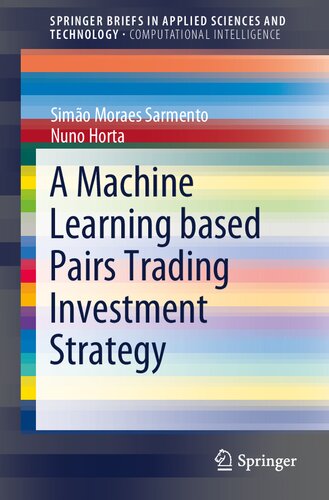Pairs Trading is a well-known investment strategy developed in the 1980s. It has been employed as one important long/short equity investment tool by hedge funds and institutional investors Cavalcante et al. [2], and is a fundamental topic in this work. This strategy comprises two steps. First, it requires the identification of two securities, for example two stocks, for which the corresponding prices series display a similar behaviour, or simply seem to be linked to each other. Ultimately, this indicates that both securities are exposed to related risk factors and tend to react in an identical way. Figure 1.1 illustrates how this behaviour can be found in some popular stocks. In Figure 1.1a, we may observe how the price series from two car manufacturers seem to be tied to each other. The same behaviour is also illustrated in Figure 1.1b, this time illustrating the price series of two of the biggest retail stores in the United States. Two securities that verify an equilibrium relation between their price series can compose a pair. 1 Once the pairs have been identified, the investor may proceed with the strategy’s second step. The underlying premise is that if two securities’ price series have been moving close in the past, then this should persist in the future. Therefore, if an irreg- ularity occurs, it should provide an interesting trade opportunity to profit from its correction. To find such opportunities, the spread 2 between the two constituents of the pairs must be continuously monitored. When a statistical anomaly is detected, a market position is entered. The position is exited upon an eventual spread correc- tion. It is interesting to observe that this strategy relies on the relative value of two securities, regardless of their absolute value.
چکیده فارسی
تجارت جفتی یک استراتژی سرمایه گذاری شناخته شده است که در دهه 1980 توسعه یافت. این به عنوان یکی از ابزارهای مهم سرمایه گذاری بلند/کوتاه سهام توسط صندوق های تامینی و سرمایه گذاران نهادی کاوالکانته و همکاران به کار گرفته شده است. [2]، و موضوعی اساسی در این اثر است. این استراتژی شامل دو مرحله است. اول، نیاز به شناسایی دو اوراق بهادار دارد، برای مثال دو سهام، که سری قیمتهای مربوطه رفتار مشابهی را نشان میدهند، یا صرفاً به نظر میرسد که به یکدیگر مرتبط هستند. در نهایت، این نشان می دهد که هر دو اوراق بهادار در معرض عوامل خطر مرتبط هستند و تمایل دارند به روشی مشابه واکنش نشان دهند. شکل 1.1 نشان می دهد که چگونه می توان این رفتار را در برخی از سهام محبوب یافت. در شکل 1.1a، ممکن است مشاهده کنیم که چگونه سری قیمت دو خودروساز به نظر می رسد که به یکدیگر گره خورده است. همین رفتار نیز در شکل 1.1b نشان داده شده است، این بار سری قیمت دو تا از بزرگترین فروشگاه های خرده فروشی در ایالات متحده را نشان می دهد. دو اوراق بهادار که رابطه تعادلی بین سری قیمت خود را تأیید می کنند، می توانند یک جفت را تشکیل دهند. 1 هنگامی که جفت ها شناسایی شدند، سرمایه گذار می تواند مرحله دوم استراتژی را ادامه دهد. فرض اساسی این است که اگر دو سری قیمت اوراق بهادار در گذشته نزدیک شده باشند، این وضعیت باید در آینده نیز ادامه داشته باشد. بنابراین، اگر یک بینظمی رخ دهد، باید فرصت تجاری جالبی برای سود بردن از اصلاح آن فراهم کند. برای یافتن چنین فرصت هایی، اسپرد 2 بین دو جزء تشکیل دهنده جفت ها باید به طور مداوم نظارت شود. هنگامی که یک ناهنجاری آماری شناسایی می شود، یک موقعیت بازار وارد می شود. این موقعیت پس از یک تصحیح اسپرد نهایی خارج می شود. جالب است که مشاهده کنید که این استراتژی بر ارزش نسبی دو اوراق بهادار، صرف نظر از ارزش مطلق آنها تکیه دارد.
ادامه ...
بستن ...
Author(s): Simão Moraes Sarmento, Nuno Horta
Series: SpringerBriefs in Applied Sciences and Technology
Publisher: Springer, Year: 2020
ISBN: 3030472507,9783030472504
ادامه ...
بستن ...










